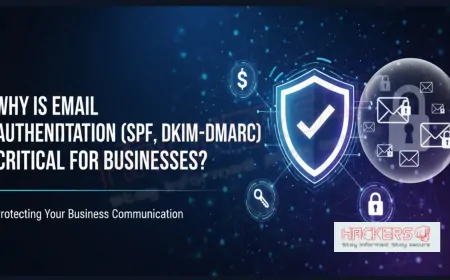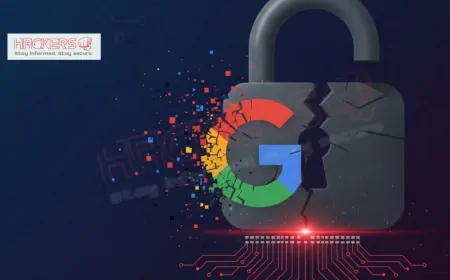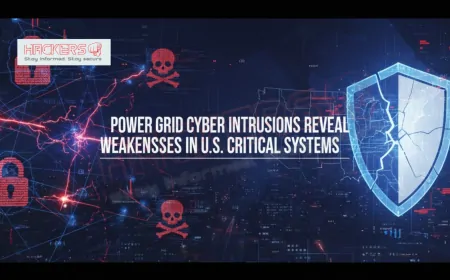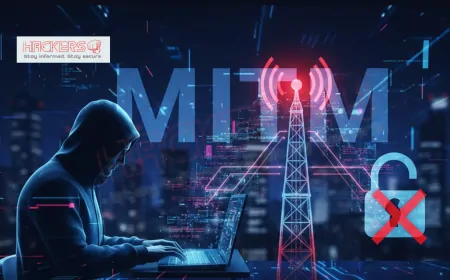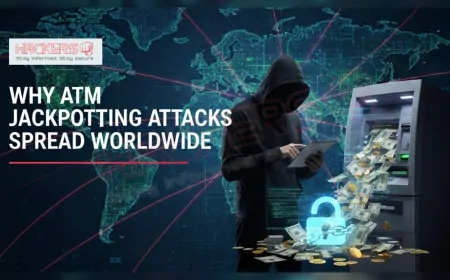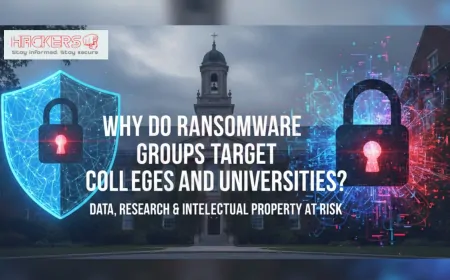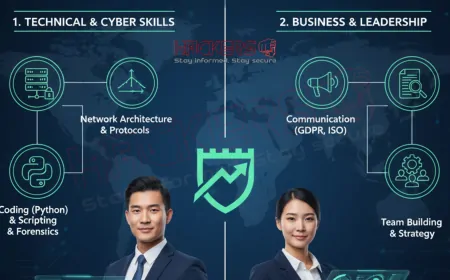Why Does Every Company Need a Cybersecurity Policy in 2025?
Imagine starting your workday with news of a massive data breach at your company: customer information stolen, operations halted, and your reputation in ruins. This isn't a far-fetched scenario. In 2025, cyber threats are more rampant than ever, with global cybercrime costs projected to hit $10.5 trillion annually. Businesses of all sizes are under siege, from small startups to giant corporations. But here's the key question: how prepared is your company? A solid cybersecurity policy isn't just a nice-to-have; it's a must-have shield in this digital battlefield. This blog post explores why every company needs one, breaking down the threats, benefits, and steps to create an effective policy. We'll keep things straightforward, so even if you're not a tech expert, you'll grasp why ignoring this could be costly.

Table of Contents
- The Evolving Cyber Threat Landscape in 2025
- What Is a Cybersecurity Policy?
- Why Every Company Needs One
- Key Components of an Effective Cybersecurity Policy
- How to Develop and Implement a Policy
- Real-World Examples and Case Studies
- Challenges in Maintaining a Policy
- Future Trends in Cybersecurity Policies
- Conclusion
- Frequently Asked Questions
The Evolving Cyber Threat Landscape in 2025
The cyber world in 2025 is a dangerous place. Threats are not only more frequent but also smarter, thanks to advances like artificial intelligence. According to the World Economic Forum's Global Cybersecurity Outlook 2025, 72 percent of surveyed leaders see cyber threats escalating. Ransomware, where hackers lock your data and demand payment, remains a top issue. But new twists include AI-driven attacks that mimic real communications to trick employees.
Statistics paint a grim picture. Over 30,000 vulnerabilities were disclosed last year, up 17 percent. The education sector alone faces 3,500 attacks weekly. Small businesses aren't spared: they make up a large chunk of targets because they often lack strong defenses. Deepfakes, fake videos or audio created by AI, are emerging as tools for fraud, like impersonating executives to steal funds.
Supply chain attacks are another worry. Hackers target vendors to infiltrate multiple companies at once. In 2025, with more remote work and cloud use, these risks grow. Without a policy to guide responses, companies scramble, leading to bigger losses. This landscape shows why proactive measures, like a cybersecurity policy, are essential. It sets rules to prevent, detect, and respond to threats.
Consider the human factor. Employees might click malicious links unknowingly. A policy educates them, reducing errors. As regulations tighten, like new federal rules, compliance becomes key. Ignoring threats isn't an option: the average data breach cost is around $4.45 million, though down slightly from last year. This section alone underscores the urgency for every company to act.
What Is a Cybersecurity Policy?
A cybersecurity policy is a document outlining how a company protects its digital assets. It's like a roadmap for security, covering rules, procedures, and responsibilities. In simple terms, it tells everyone what to do to keep data safe.
Why have one? It ensures consistency. Without it, employees might handle threats differently, leading to gaps. Policies cover areas like password management, where strong, unique passwords are required, and data access, limiting who sees sensitive info.
In 2025, policies evolve to include AI risks and remote work guidelines. They're not static: regular updates keep them relevant. For beginners, think of it as house rules for your digital home, preventing intruders.
Types vary: some focus on IT security, others on endpoints like laptops. But all aim to minimize risks. A good policy aligns with business goals, supporting growth while protecting against threats. This foundation sets the stage for why it's indispensable.
Why Every Company Needs One
Every company, big or small, faces cyber risks. A policy provides structure to combat them. First, it helps comply with laws. In 2025, regulations like GDPR or new US federal policies demand robust security. Non-compliance can mean hefty fines.
Second, it protects assets. Data is gold: customer info, intellectual property. A breach erodes trust and revenue. Policies outline defenses, like firewalls and encryption, explained as digital locks.
Third, it prepares for incidents. No system is foolproof, but a policy includes response plans, minimizing damage. Quick action can save millions.
Fourth, it educates staff. Many breaches start with human error. Training via policy reduces this, fostering a security culture.
Fifth, it boosts resilience. In a world of evolving threats, policies adapt, ensuring long-term protection. For SMBs, it's vital: they often lack resources but face big risks. Overall, a policy isn't bureaucracy: it's a survival tool in 2025's cyber jungle.
Key Components of an Effective Cybersecurity Policy
An effective policy has several parts. Start with purpose and scope: why it exists and what it covers. This sets clear goals.
Next, roles and responsibilities: who does what. Senior leaders commit, IT handles tech, employees follow rules.
Data classification: label info by sensitivity, like public or confidential. This guides protection levels.
Access control: limit who accesses what, using roles and MFA (multi-factor authentication, an extra verification step).
Incident response: steps for breaches, including reporting and recovery.
Training and awareness: regular sessions on threats like phishing.
Compliance and audits: ensure adherence, with regular checks.
Other elements: BYOD (bring your own device) rules, network security, and updates. These components create a comprehensive shield.
How to Develop and Implement a Policy
Developing a policy starts with assessment: identify risks and assets. Involve stakeholders from all departments.
Draft based on components: use templates for guidance. Keep language simple.
Get approval from leadership, then communicate to staff via meetings or emails.
Implement with training and tools. Monitor effectiveness, update yearly or after incidents.
For 2025, include AI guidelines and remote work. This process ensures the policy works in practice.
Real-World Examples and Case Studies
Examples show policies in action. One company avoided a breach by having clear incident response, containing it quickly.
In contrast, firms without policies suffered huge losses. A 2025 case: a business hit by ransomware paid millions due to no backup plan.
Government policies, like CISA's best practices, offer models. Types include IT security with network rules, endpoint for devices. These illustrate benefits and pitfalls.
Challenges in Maintaining a Policy
Maintaining a policy has hurdles. Rapid threat changes require updates. Resource limits for small firms make implementation tough.
Employee resistance or lack of awareness can undermine it. Compliance across global teams adds complexity.
Overcoming: regular training, leadership buy-in, tools for monitoring. In 2025, AI helps automate updates. Addressing challenges keeps the policy effective.
Future Trends in Cybersecurity Policies
Looking ahead, policies will integrate AI for threat detection. Quantum computing risks will prompt new encryption rules.
Focus on zero-trust: verify everything. Global collaboration will standardize policies.
Privacy emphasis with data laws. Policies will be dynamic, using automation. Staying ahead ensures resilience.
Conclusion
In 2025, with cyber threats at record highs, every company needs a cybersecurity policy to protect assets, comply with laws, and respond effectively. We've covered the landscape, components, development, examples, challenges, and trends. A policy provides structure, education, and peace of mind. Don't wait for a breach: assess your needs, draft one, and implement it. Your business's future depends on it.
What is a cybersecurity policy?
A cybersecurity policy is a document outlining rules and procedures to protect a company's digital assets from threats.
Why is it important in 2025?
With cybercrime costs at $10.5 trillion, it helps prevent breaches and ensures compliance.
What are common threats?
Ransomware, phishing, and AI-driven attacks are prevalent.
Who should create the policy?
Involve IT, leadership, and departments for comprehensive coverage.
What components are essential?
Purpose, roles, access control, incident response, and training.
How often to update?
Annually or after major incidents or threat changes.
Does size matter?
No, even small companies need one for protection.
What if no policy?
Risks include breaches, fines, and lost trust.
How to train staff?
Use sessions, simulations, and regular reminders.
What about remote work?
Include guidelines for secure connections and devices.
Are templates available?
Yes, many online resources offer customizable ones.
How to measure effectiveness?
Through audits, incident reports, and compliance checks.
What role does AI play?
AI helps detect threats but policies address its risks.
Is compliance mandatory?
Depends on industry, but often yes for regulations.
What are deepfakes?
Fake media using AI, addressed in modern policies.
How much does a breach cost?
Around $4.45 million on average.
Can policies prevent all attacks?
No, but they minimize damage and aid recovery.
What is zero-trust?
A model verifying every access, trending in policies.
How to start developing one?
Assess risks, draft components, get approval.
Why involve leadership?
Their commitment ensures enforcement and resources.
What's Your Reaction?







